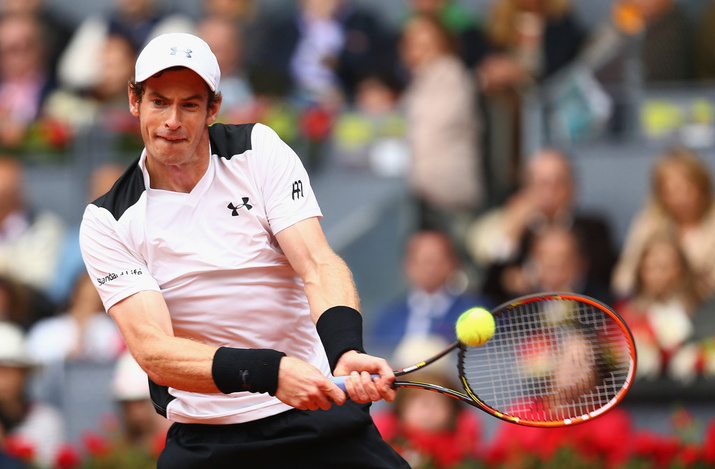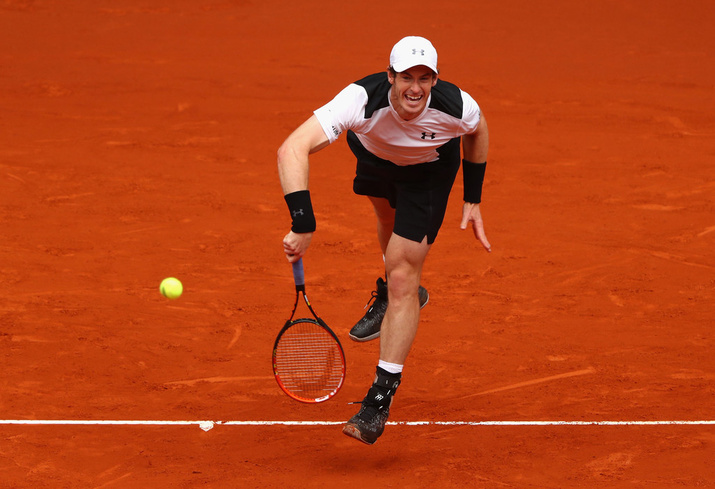Don't miss any stories → Follow Tennis View
FollowReflecting on Murray's Resurgence on Clay
By the time Spanish press was over and the English began, the odor of Rafael Nadal’s rotting mood had rapidly diffused to the dark corners of the press room. What did he think was the difference between himself and his conqueror, Andy Murray? “A few points,” he barked abruptly, throwing the seasoned reporter stuttering in search of a follow up question. Was his performance and the series of shockers it contained down to the nerves? “No.” Head turn. Next question. And what did he think about Murray’s prospects at Roland Garros? This time he sighed, he leaned forward, and he easily could have rolled his eyes.
“In Roland Garros?” he said, exasperated. “What you mean, because he played Roland Garros last year and lost in five sets? He can win the title. If you were in the semifinal two times and you lost in five sets in semifinals, it's obvious that you can win the title, no?”
The first two answers were dreadful, but there was much to empathize with in both the final question and the answer. There is no reason why a player as good as Andy Murray shouldn’t have been able to convert his stratospheric stats onto the clay court.

And yet, well, it’s still strange. It’s still bizarre to think that a dazed and confused Andy Murray spent much of his time since the Australian Open struggling with defeats to Grigor Dimitrov and Federico Delbonis, yet he has arrived in the clay season and has instantly found perfect clarity. It’s still mind-boggling to consider that Murray now has as many victories over Rafael Nadal on clay in Spain as both Djokovic and Federer combined. And despite Nadal’s airtight logic in regard to Murray’s French Open results and this year on the clay proving beyond doubt that this is the new normal, his presence as a contender for the Roland Garros title is still something to get accustomed to.
Murray’s 7-5 6-4 victory over Rafael Nadal today will not be remembered as a classic, and no amount of ATP revisionist history could possibly convert it into such. With the exception of Nadal’s attempts to rev up his engines at the beginning of the second set, it was a bad, bad match perfectly encapsulated by the final game of each set.
Murray served for each set, and both times he collapsed in a daze of unforced errors. Rather than capitalizing on the weakness Murray projected for the world to see in the first set, Nadal arrived at 5-6 and promptly flew one forehand out, dropped two forehands halfway up the service line, and gifted Murray triple set point with a backhand shank. Not to be outdone, his attempts to defend the second set concluded with perhaps the most hopeless pair of points he has played to end a match: a horrifically botched smash followed by a forehand into the net.
But it’s a victory that must feel significant to Murray. For the second time in three weeks, the Scot faced Nadal on a clay court, and, for the most part, he was able to dominate the passage of play. As Nadal struggled in unfavorably cool conditions, Murray once again owned the baseline, and his efforts with his crosscourt backhand into the Nadal forehand continued to be rewarded.
The performance in victory may not have come close to touching the level he maintained in defeat for a set and a half in Monte Carlo, where he played some of the best clay court tennis seen so far this year. But it was a winning performance. Murray responded to the nerves that arrived in the first set by thumping down a forehand return winner on set point. And when Nadal did rev up his engine during the opening games of the second stanza, he found big first serves to keep the Spaniard at bay.

Murray’s serve was simultaneously a damaging and a victorious factor of his performance throughout the match. On the one hand, his first-serve percentage was abysmal. He won the first set while making 41% of his first serves, something that shouldn’t happen against any top player, not least Rafael Nadal on clay. But this week Murray has debuted increased pace and spin on serve. It remains to be seen if the improvements will endure in tension-filled moments deep in a major, but the increased effectiveness of his serve has seemingly offered him the freedom to go after his first serve. The 41% was the drawback, but big first serves came to his aid at numerous points throughout the second set, playing a starring role in Nadal’s atrocious 2/13 break point conversion rate
“Same yesterday in my match with Tomas as well,” Murray said. “But I kept going for it, and that paid off when he had chances really. Obviously I would've liked to have served a higher percentage. Slightly different today having served indoors for the whole match yesterday. […] But I kept going for it.”
Murray will be well advised to keep on going for it on Sunday as he attempts to defend his title. The act of actually defending the title will require an effort on a different stratosphere from the mess he and Nadal conspired to create on Saturday, and three weeks removed from Djokovic’s early Monté Carlo exit, the task of defeating him looks as daunting and unlikely as ever. But If you won the title last year and have since recorded three other clay semifinals at major and Masters 1000 levels, it's obvious that you can win the title, no?










